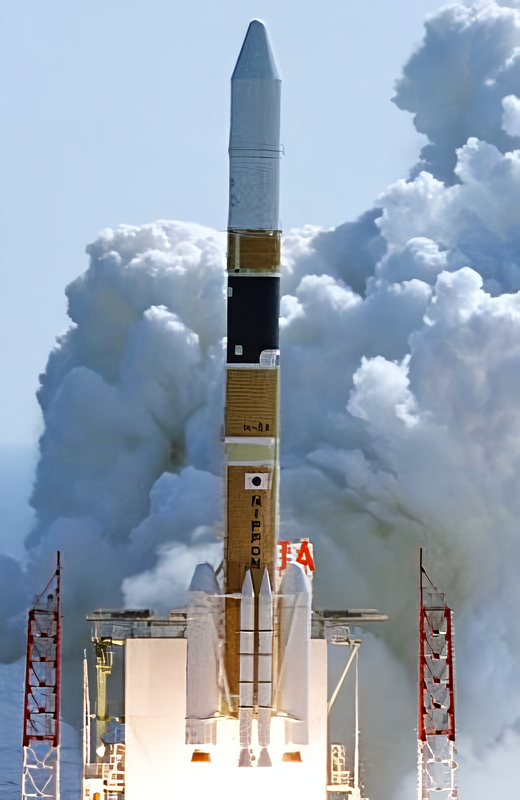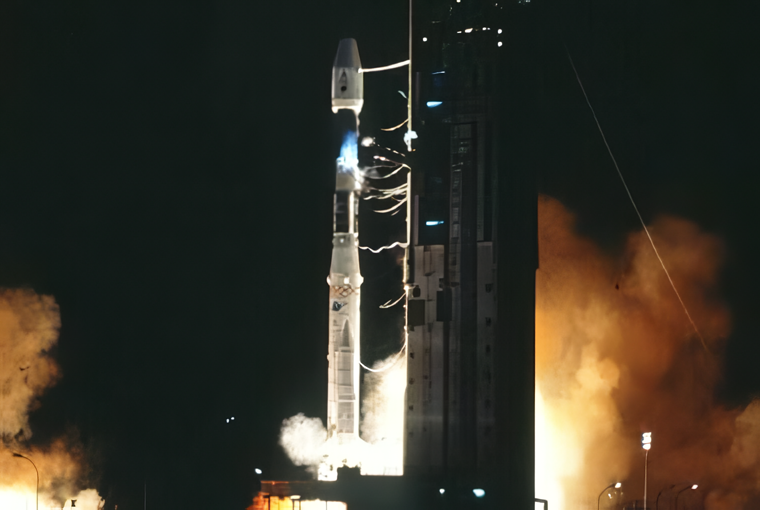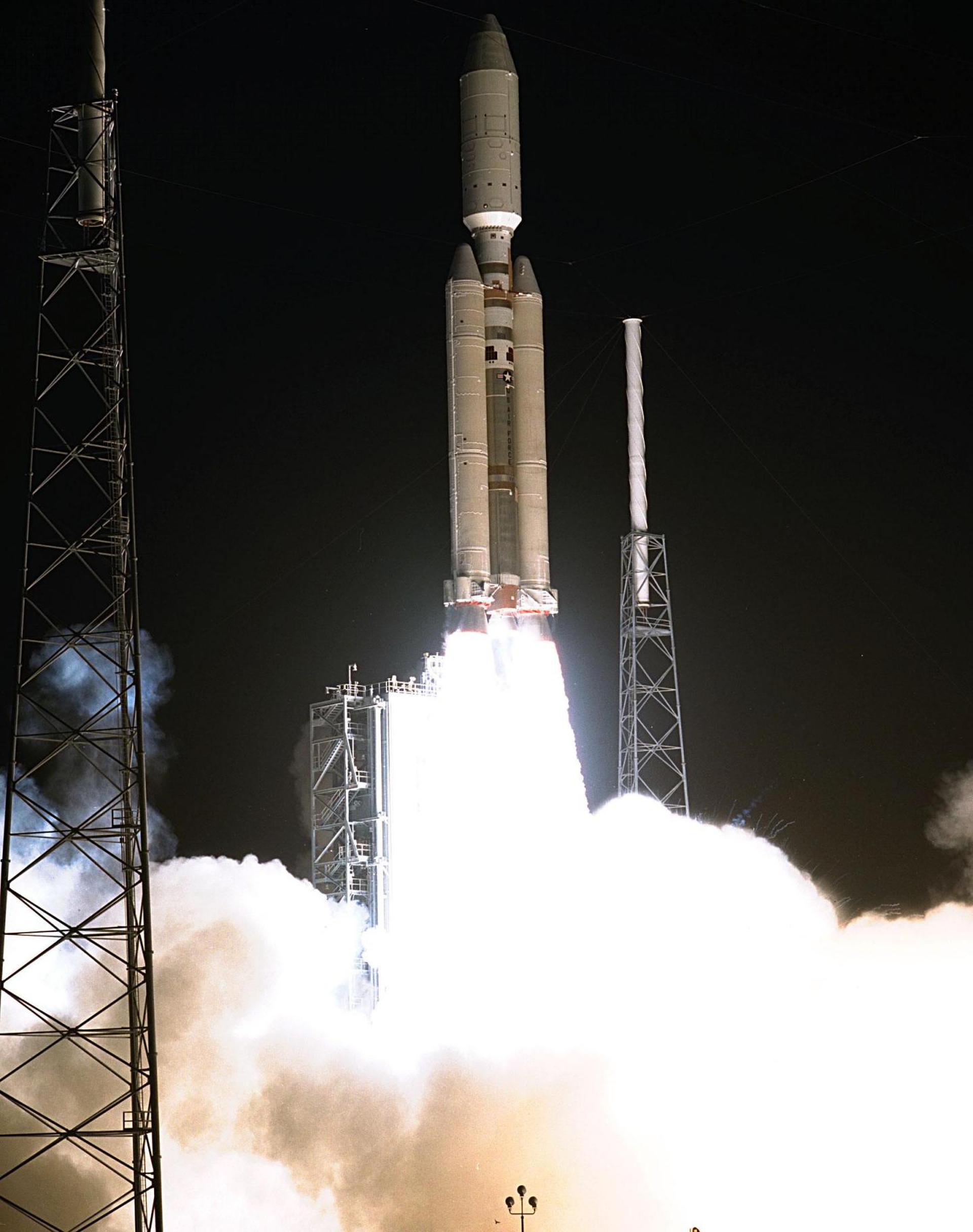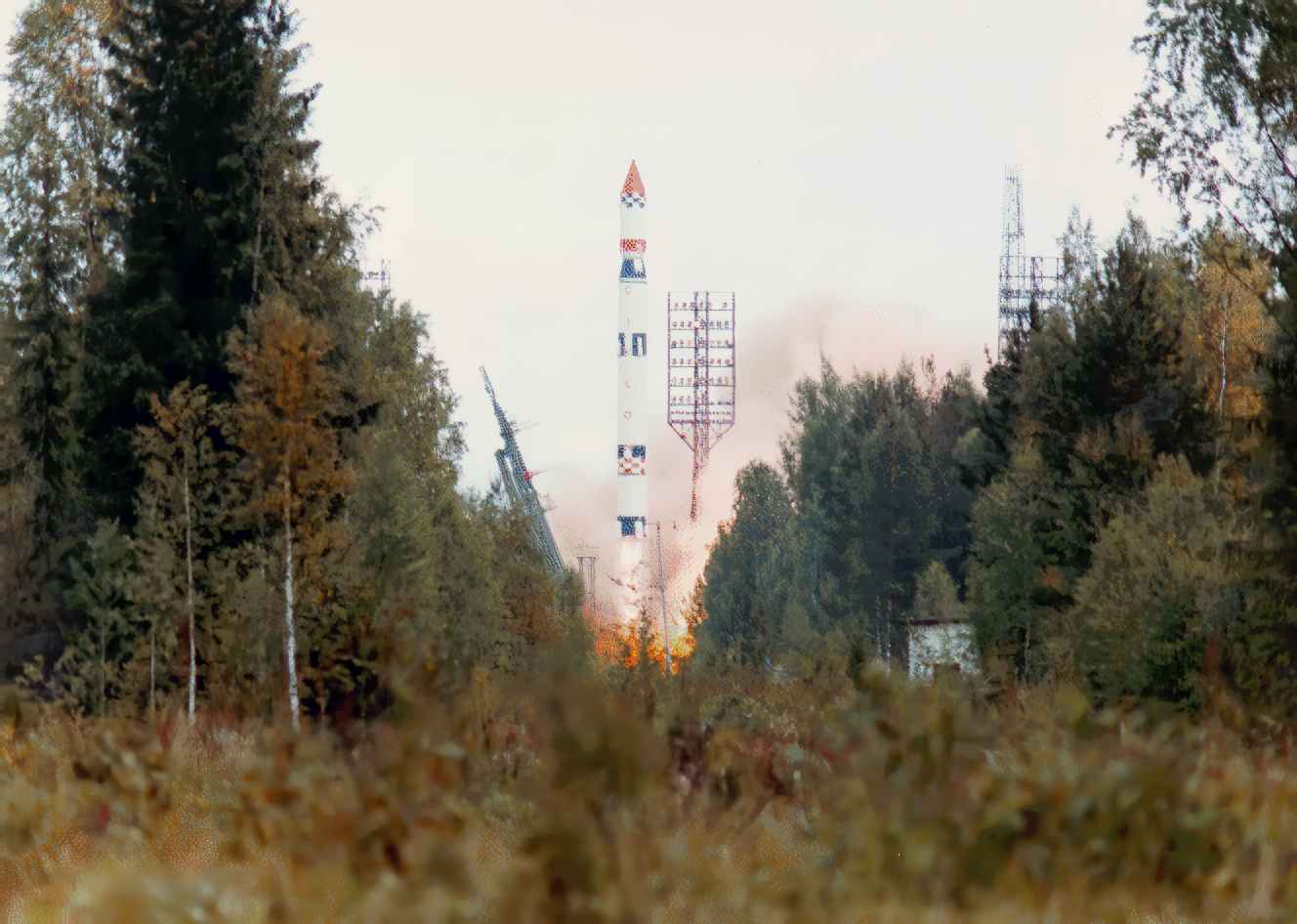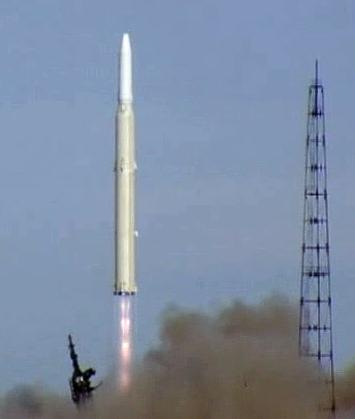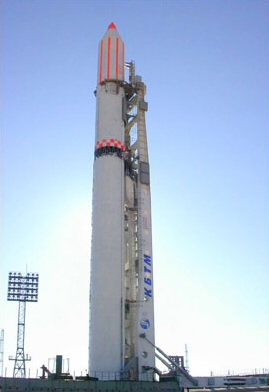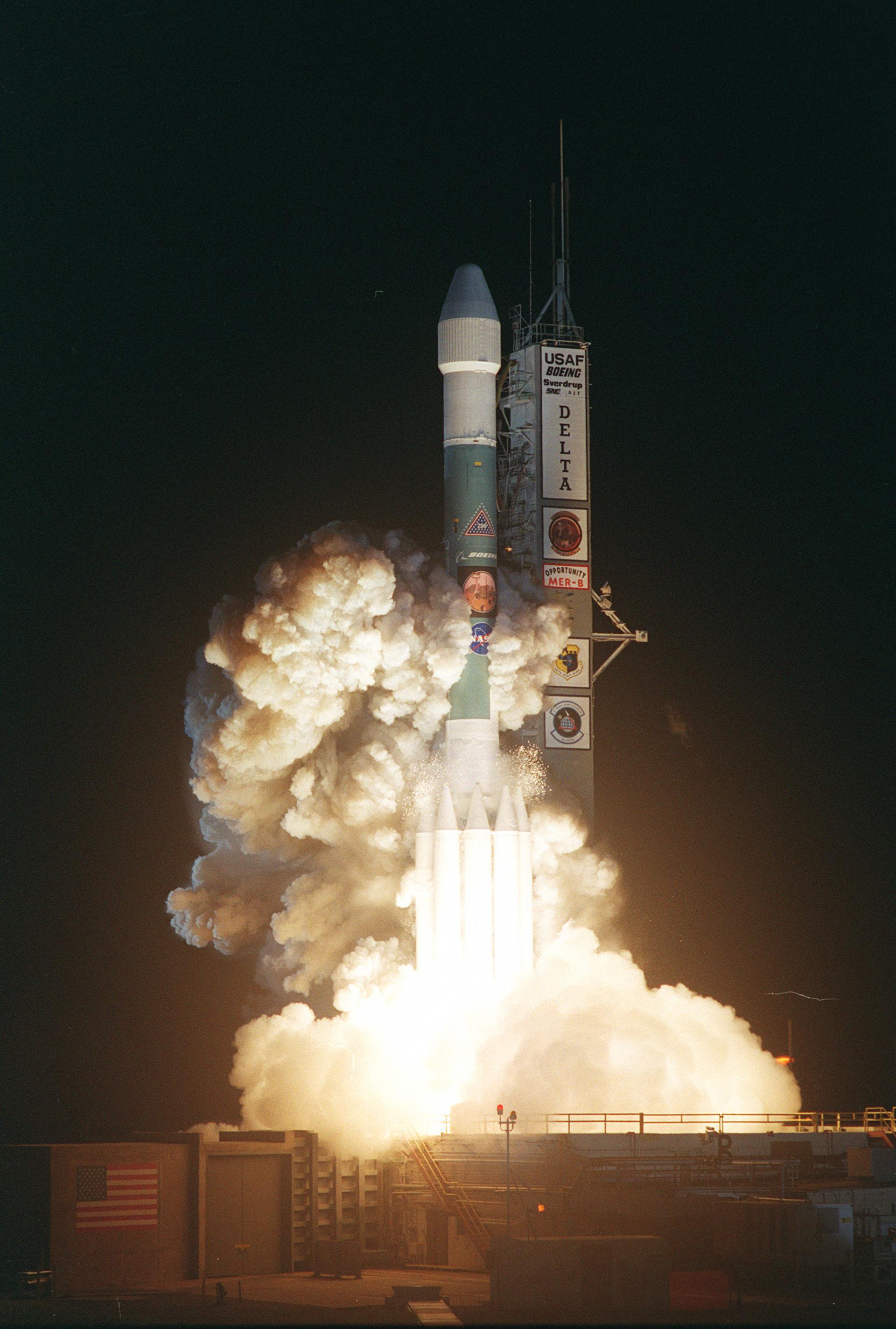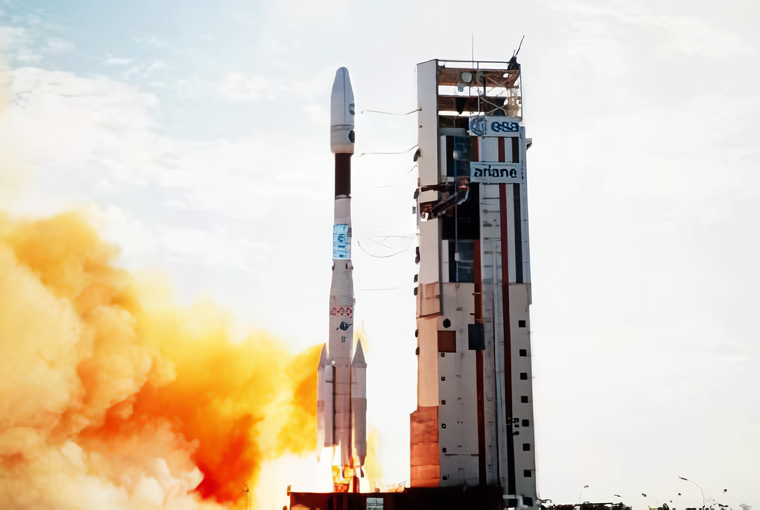Previous Spaceflight Launches
Filter by Agency, Locations or Vehicles
Show All LaunchesH-IIA 2024 | Tsubasa
Mitsubishi Heavy Industries | JapanTanegashima Space Center, Japan
Feb. 4, 2002, 2:45 a.m.
Status: Launch Successful
Mission:
MDS 1 (Mission Demonstration Satellite 1), renamed Tsubasa after launch, is a Japanese satellite that was launched by a H-2A-2024 rocket from Tanegashima Space Center at 02:32 UT on 4 February 2002. It was renamed Tsubasa (meaning Wings) after the successful launch.
Elliptical OrbitAriane 42L | Insat 3C
Aérospatiale | FranceGuiana Space Centre, French Guiana
Jan. 23, 2002, 11:46 p.m.
Status: Launch Successful
Mission:
Indian National Satellite (Insat) is a multipurpose space system for communication, broadcasting and meteorological services. Insat-3C, carrying Fixed Satellite Services (FSS) transponders, Broadcast Satellite Services (BSS) transponders and Mobile Satellite Services (MSS) transponders is intended to continue the services of Insat-2DT and Insat-2C which are nearing their end of life besides improving and augmenting the Insat system capacity. Insat-3C is the second satellite of the Insat-3 series.
Geostationary Transfer OrbitTitan IVB | Milstar 5
Lockheed Martin | United States of AmericaCape Canaveral SFS, FL, USA
Jan. 16, 2002, 12:30 a.m.
Status: Launch Successful
Mission:
Milstar (Military Strategic & Tactical Relay) is the tactical and strategic multiservice satellite system designed to provide survivable communications for U.S. forces worldwide. The program is managed by the U.S. Air Force Space and Missile Center.
Geosynchronous OrbitTsiklon-3 | Strela-3 128 to 130 & Gonets 10 to 12
Yuzhnoye Design Bureau | UkrainePlesetsk Cosmodrome, Russian Federation
Dec. 28, 2001, 3:24 a.m.
Status: Launch Successful
Mission:
Gonets- satellite were the civilian derivate of the military Strela-3 satellite system. The Gonets system was offered to support international health organizations to meet their global communications needs for the transfer of medical data and records to remote sites. Strela-3 was second generation of strategic store-dump military communications satellite. Development of this generation to replace the first generation Strela-1M and Strela-2M satellites began in 1973.
Low Earth OrbitTsiklon-2 | US-PM 11
Yuzhnoye Design Bureau | UkraineBaikonur Cosmodrome, Republic of Kazakhstan
Dec. 21, 2001, 4 a.m.
Status: Launch Successful
Mission:
Systems aboard the 3300 kg satellite included the Radio-Technical Reconnaissance system and systems for electronic camouflage and self-protection. An engine unit maintained the orbital altitude and made a final deorbit of the satellite at the end of the mission.
Low Earth OrbitZenit-2 | Meteor-3M No. 1
Yuzhnoye Design Bureau | UkraineBaikonur Cosmodrome, Republic of Kazakhstan
Dec. 10, 2001, 5:18 p.m.
Delta II | Jason
United Launch Alliance | United States of AmericaVandenberg SFB, CA, USA
Dec. 7, 2001, 3:07 p.m.
Status: Launch Successful
Mission:
Jason-1 is the first follow-on to the highly successful TOPEX/Poseidon mission that measured ocean surface topography to an accuracy of 4.2 cm, enabled scientists to forecast the 1997-1998 El Niño, and improved understanding of ocean circulation and its effect of global climate.
High Earth OrbitSpace Shuttle Endeavour / OV-105 | STS-108
National Aeronautics and Space Administration | United States of AmericaKennedy Space Center, FL, USA
Dec. 5, 2001, 10:19 p.m.
Status: Launch Successful
Mission:
STS-108 was a Space Shuttle mission to the International Space Station (ISS) flown by Space Shuttle Endeavour. Its primary objective was to deliver supplies to and help maintain the ISS. It was the 12th shuttle flight to visit the International Space Station and the first since the installation of the Russian airlock called Pirs on the station. Endeavour delivered the Expedition 4 crew to the orbital outpost. The Expedition 3 crew returned to Earth on Endeavour.
Low Earth OrbitProton | Uragan 78, 79 & Uragan-M 1
Khrunichev State Research and Production Space Center | RussiaBaikonur Cosmodrome, Republic of Kazakhstan
Dec. 1, 2001, 6:04 p.m.
Ariane 44LP | DirecTV-4S
Aérospatiale | FranceGuiana Space Centre, French Guiana
Nov. 27, 2001, 12:35 a.m.
